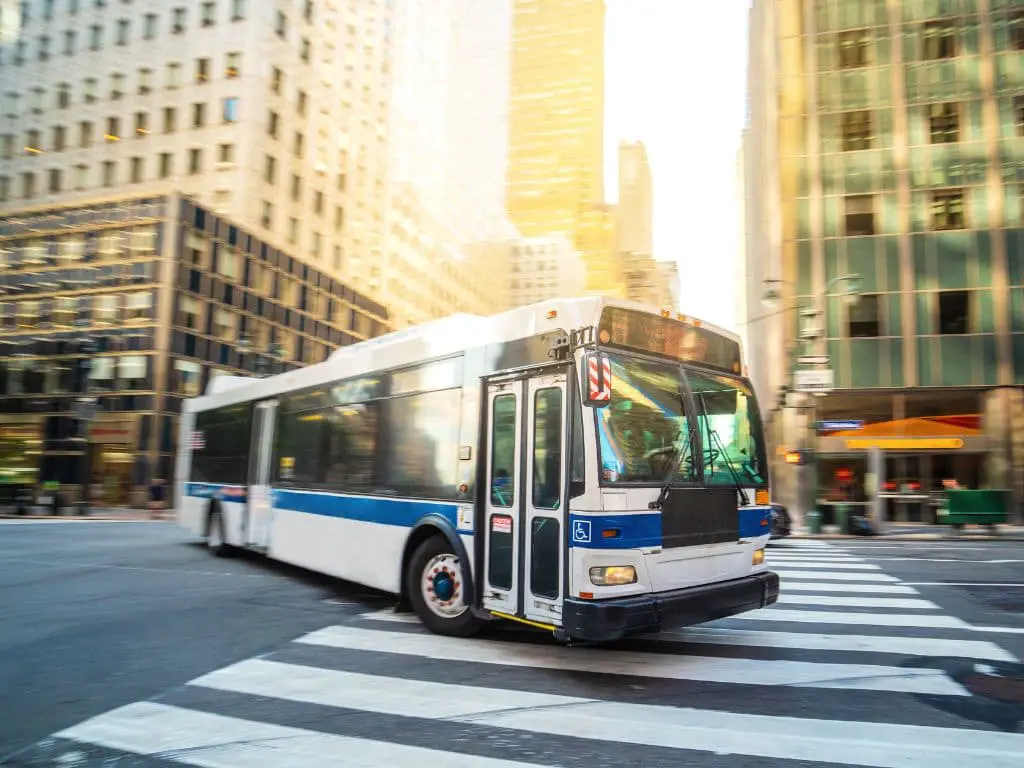What Age Groups Use Public Transport the Most?
Public transportation serves people across all age groups, but usage patterns vary significantly by age. Understanding these differences can help transit agencies better meet the needs of their diverse ridership.
Overall, those in the most economically active years of their lives, ages 25-54, make up the largest share of public transit users at 79%. Only 7% of riders are age 65 and over. People under age 25 account for 14% of ridership. However, limitations in surveying young children mean this figure is likely an undercount. Still, it is clear adults comprise the vast majority of transit users.

Why Are Younger People More Likely to Use Public Transport?
While all age groups utilize public transportation, those under 25 are disproportionately likely to do so compared to their share of the total population. There are several key factors that help explain this prevalence.
Many younger riders rely on transit out of necessity. Teenagers and college students often face budget constraints that make owning and maintaining a personal vehicle challenging. Public transportation provides an affordable alternative. Without a driver’s license, vehicles, or funds to purchase them, young people have limited transportation options outside of getting rides from others or using transit.
For teenagers still in high school and middle school students, public transit offers a means of independent mobility not otherwise available. Youth eager to explore and socialize with friends see transit as facilitating access to shopping, recreation, and employment opportunities.
Environmental consciousness also boosts use of public transit among youth. Surveys show young people express more concern about climate change and interest in reducing their carbon footprint than older generations. Opting for transit over driving allows them to minimize environmental impact.
On college campuses with limited parking and dense populations, using transit can be more convenient than driving. Universities may provide free or discounted access to public transportation as an incentive. Living near campus in housing with transit access enables students to avoid the hassles of having a car.
How Can Seniors Make the Most Out of Using Public Transportation?
Many transit agencies understand that older adults may need extra assistance in order to comfortably and safely use public transit. That’s why they offer special programs and policies aimed at senior riders. Taking full advantage of these resources can help make transit an easy, affordable, and pleasant experience.
One of the first things seniors should look into is whether discounted fares are available. Reduced ticket prices make taking the bus or train more economical. Even small discounts add up for those on fixed incomes looking to save money. On systems with multiple fare options, it’s worth researching if a senior pass would be the cheapest.
For seniors new to public transit, travel training classes can provide an invaluable introduction. These free sessions arranged by transit agencies teach seniors how to plan trips, read schedules, pay fares, and navigate stations and stops. Trainers give tips and point out resources to make seniors feel confident using the system. No one is too old to learn new travel skills!
When deciding which routes to take, seniors should consider accessibility factors like low-floor kneeler buses or trains with level boarding platforms. Steps can be difficult for older riders to climb, so routes with ramps or no steps at all are ideal. Priority seating near the door also helps seniors avoid stumbling through crowded aisles.
Of course, just because certain seats are labeled as “priority seating” doesn’t mean seniors shouldn’t use them if no disabled riders are occupying them. Senior citizens shouldn’t feel guilty sitting in these spots. After all, they are intended for older and less mobile riders.
To avoid crowded buses and trains, seniors may want to schedule trips during off-peak rather than rush hour times. An added benefit is that midday schedules are often more open and flexible for appointments and outings. Taking advantage of downtimes in transit activity makes travel less stressful.
By utilizing programs, policies, and tools designed with older riders in mind, seniors can feel comfortable and confident getting around town using public transportation.
How Does Availability and Cost Influence Public Transport Usage?
Two key factors affecting transit use across age groups are service availability and affordability. Extensive networks with frequent service and broad geographic reach encourage ridership by making transit an easily accessible option. But transit can only be used if it serves locations people need to travel to at times they need to travel.
Usage is also highly sensitive to cost, particularly for riders on limited budgets. While overall transit farebox recovery rates are around 25%, fare revenue accounts for a much higher percentage of operating costs on urban bus networks. Discounted student and senior fares help boost affordability. But for low-income adults, even base fares can be out of reach.
Differences in vehicle availability and income explain some variation in transit use across age. For example, people 65 and over are more likely to have access to a personal vehicle and have higher average incomes. This helps explain their low rates of transit usage compared to 25-54 year olds, who take 79% of all transit trips.
Yet availability and affordability cannot entirely account for usage differences. Personal preferences also play a key role.
What Makes Public Transport a Quality Option for Commuting?
While necessity leads many to initially use public transit, convenience, cost savings, and other benefits often convert people into regular riders. For many, transit provides a higher quality experience than driving once factors like traffic and parking are considered.
During peak periods, travel by transit can be significantly faster than congested highways and urban streets. Transit commuters can spend their travel time reading, responding to emails, or relaxing rather than stressed in traffic jams. With ridesharing services bridging the first/last mile, transit can compare favorably to door-to-door car trips.
Opting for transit reduces transportation costs like fuel, parking, vehicle maintenance, and insurance. Even occasional use can provide savings compared to fixed driving expenses. People seeking to minimize car ownership costs may aim to use transit for commuting while retaining a vehicle for other needs.
For riders wanting to reduce their environmental impact, transit offers a greener alternative to driving. Buses and trains accommodate far more passengers per vehicle mile than private cars. Lower emissions per capita makes transit key to combating climate change and improving air quality.
The collective benefits of transit make cities more livable. Less auto congestion reduces delays for those who must drive. People living near high-quality transit enjoy enhanced mobility. With more residents sharing rides, public transportation promotes efficient use of limited urban space.
What are the Challenges Faced While Using Public Transport?
While many find public transit an appealing option, riders do face challenges stemming largely from sharing vehicles with strangers. Transit systems struggle to provide service as reliable and convenient as personal cars.
Vehicle breakdowns, traffic delays, and uneven spacing between buses and trains can frustrate commuters. Missing transfers or unexpected delays can ruin tight schedules. Safety concerns may arise from rowdy passengers, harassment, and crime.
Overcrowded vehicles and lack of personal space diminish comfort. Boarding and exiting buses and trains can be difficult for seniors and riders with disabilities. Inclement weather and long walks to stops and stations take a toll.
Access to transit is limited for people living in lower density suburbs and rural areas. Infrequent off-peak service fails to meet needs of shift workers, parents, and others. Transfers and complex ticketing impede ease of use.
How Can We Make Public Transport More Attractive to All Age Groups?
Boosting public transit ridership across age groups requires improving service quality, affordability, accessibility, and reputation. Investments in expanded operating hours, reduced crowding, and improved reliability and safety are essential.
New low-emissions electric buses and trains will appeal to environmentally-conscious younger riders. Design features enhancing comfort, cleanliness, and ease of use will attract new senior riders. Lower fares and integration with on-demand microtransit can grow ridership among lower income adults.
Transit agencies must aggressively counter negative stereotypes of buses and trains as scary, dirty, and only for those with no other options. Marketing showcasing benefits like productivity and cost savings during commuting can reshape perceptions.
With the United States population aging and youth increasingly eco-conscious, public transportation has opportunities to grow ridership across age groups. But this requires sustained commitment to providing quality affordable service meeting diverse needs.
Frequently Asked Questions
-
What age group uses public transport the most?
The 15-19 year old age range saw the highest share of public transport use. This is because people are more independent, have to travel further to reach school, university or work, or cannot afford to pay for private transportation.
-
Why senior transportation is important?
Older adults continue to drive even though they are more likely to do so later in their lives. According to the Federal Transit Administration, a decline in vision, strength, reaction time, and short-term memory could make driving unsafe. Public transportation is therefore crucial.
-
How many elderly people use public transport?
Only 20% of people aged 70 to 74 who live in rural areas take public transportation weekly, as opposed to 38% for those living in urban settings. 18% of people over 65 who live in rural areas do not use public transportation because it isn’t available. This compares to just 2% for those in urban areas.
-
What is the meaning of paratransit?
Paratransit is a transportation service for persons with disabilities that can’t use regular fixed-route transit services. Paratransit often offers door-to-door transportation for those who call them to book a ride.
-
How can you help a senior citizen waiting for the bus?
Answer: Ask him/her for help by asking them “can you help me sir or madam” and then try to get their assistance
-
Which age group is the heaviest users of healthcare services?
The role of age itself is also important. Older adults over 85 have the greatest per capita use of health services. This population will increase by 5 million to 9 millions between 2005- 2030.
-
Which program provides much needed transportation services to and from the day center as well as to medical appointments as needed?
Transportation Services. Medi-Cal provides transportation from and to Medi-Cal services. It includes transport to and from appointments for medical, dental or mental health problems, substance abuse disorder treatment, prescription pickups, and supplies.
-
How do seniors get around without a car?
Seniors can use county public transportation in the United States. Most states offer low- or free-cost transportation for senior citizens. Call your local Area Agency on Aging to learn more about these services. These agencies will connect you to local programs.
-
Does NJ have access a ride?
NJ TRANSIT’s ADA Paratransit Program, Access Link, was created to offer public transport to persons with disabilities that are unable or unable to use local buses according to the American with Disabilities Act.
-
What are the problems faced by disabled persons transport?
Lower use of public transport among seniors with mobility impairments has been explained by difficulties walking, inaccessible facilities and vehicles; limited services and affordability; availability in rural areas; and accessibility.
-
How does age affect transportation?
Transportation is more difficult for older adults. Some older adults may not be able to drive or they might drive less often. You may not have the means to drive your own vehicle and they will need to be dependent on caregivers and family members or other public transport services.
-
What are the 3 types of transportation?
Author: Dr. Jean-Paul Rodrigue. The transport modes support the movement of freight and passengers. These are considered mobile transportation assets. They can be divided into three main types: land, rail, and pipelines, water, and shipping.
-
How many cars does a bus take off the road?
Buses are great for the environment, our cities and society. A full-sized, double-decker bus is capable of taking 75 vehicles off the roads. This means less traffic and cleaner air. Learn how you can improve service and bring more people aboard.
-
Can seniors call Uber for a ride?
You don’t need an app to book a ride with Uber. Senior citizens can go directly to Uber. It works like this: A family member or business using Uber’s feature will be able book rides from their dashboard.
-
What is Nadtc?
National Aging and Disability Transportation Center is a Federal Transit Administration program that helps communities create accessible transportation. 866-983-3222.







